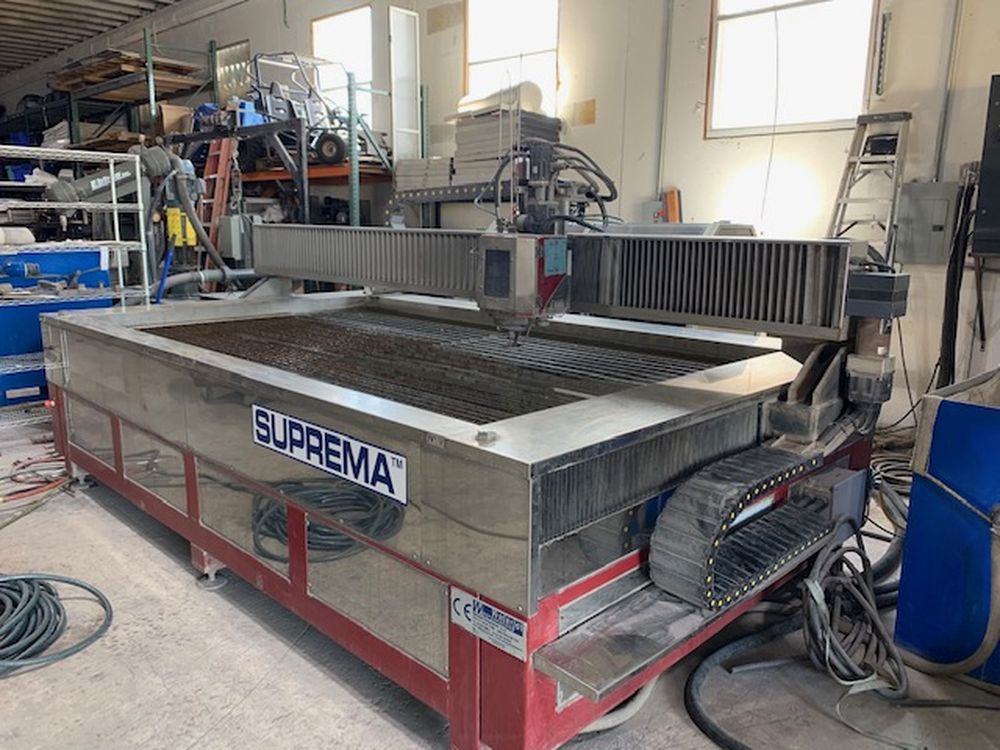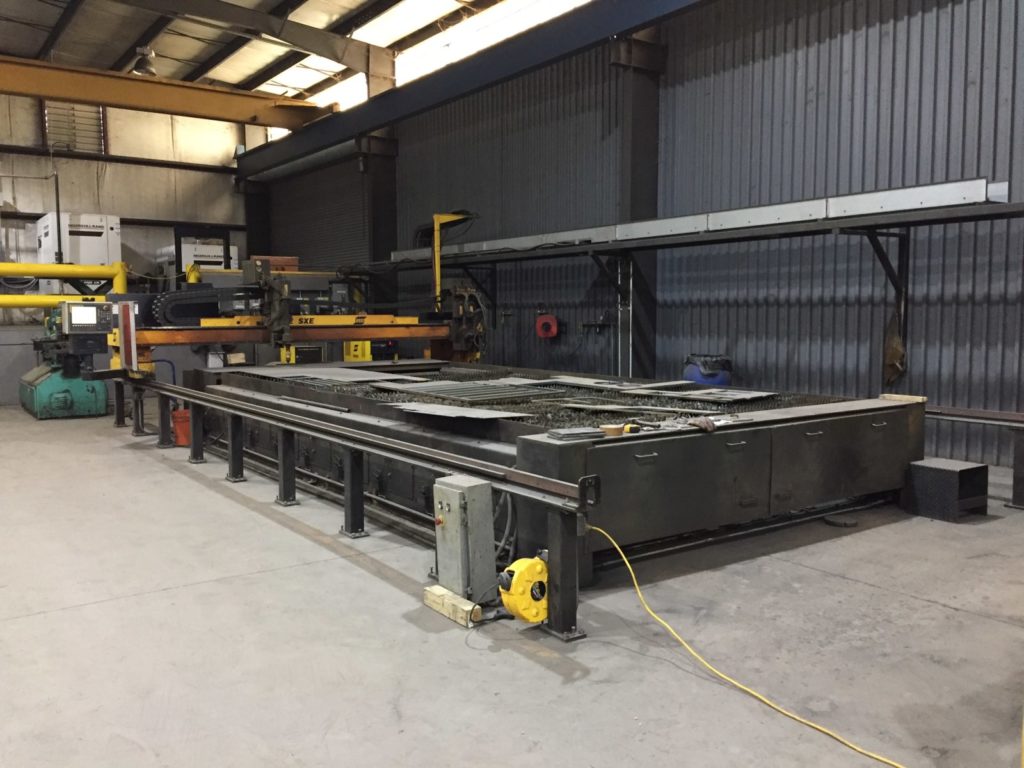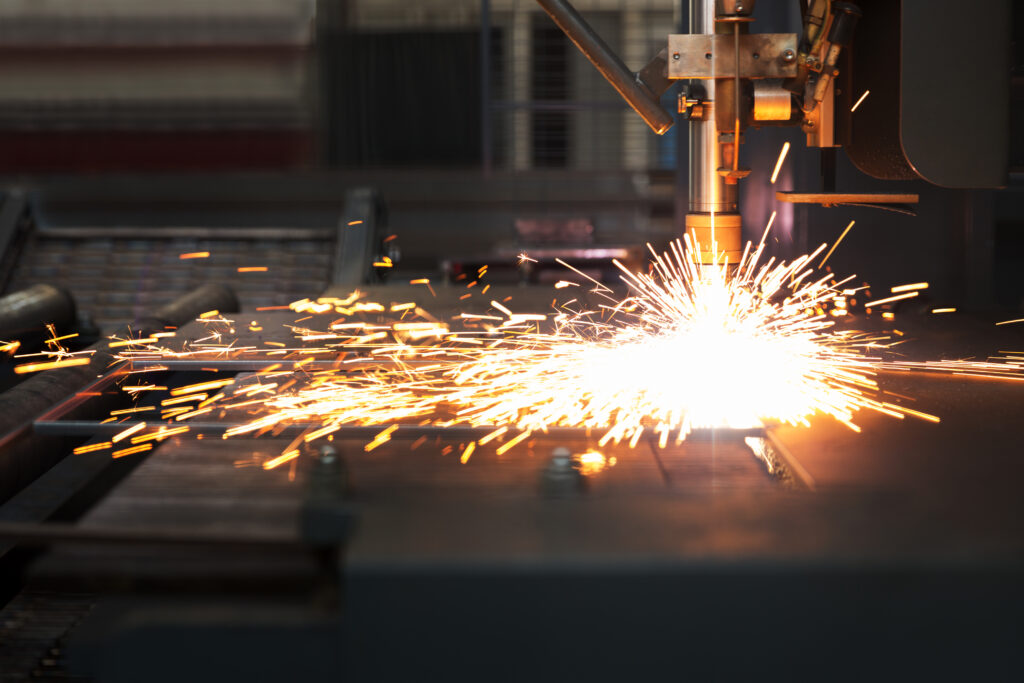When you’re considering upgrading or adding to your manufacturing line, there are a couple of options you can consider. Waterjet or plasma cutter? Though both have their specific advantages, you’ll need to carefully consider the needs of your production line, as you’ll find differences in the cutting process that impact the cut quality, including kerf width, high temperature heat distortion, cut speed and the ability to make a clean cut in your base material. It will also impact whether you work with conductive materials, such as mild steel, stainless steel, or carbon steel. Material properties can also include factors such as the material thickness, which can impact your final outcome, as thick materials may be better suited to a specific type of cutter while complex shapes, soft materials and small parts may require another. Because these impacts can vastly impact your production rate and efficiency, it’s important to understand the differences between a waterjet cutter and a plasma torch cutter. Let’s take a look at the differences between them so that you can choose the best option for your manufacturing business.
Though both are types of CNC milling tables, both options provide different way to cut material, which results in different outcomes . . .
Abrasive Waterjet Cutting

A waterjet machine uses abrasive material mixed with water that is shot at high pressure against the metal. They have a slower cut speed than plasma, however, they offer a much stronger level of precision, approaching that of CNC laser cutting. In fact, waterjet CNC cutting provides a kerf of 0.035″, only slightly larger than laser by a hundredth of an inch, while the margin of error of +/- 0.005″ matches that of laser cutter machines. With additional accessories that minimize taper, that margin of error can be further improved. This level of accuracy combined with its lack of heat distortion found in laser and plasma cutters gives waterjet CNC machines the highest quality cuts and requiring only a very small amount of sanding or finishing work to be useable.
CNC Plasma Cutting

A plasma-based CNC machine, by comparison, uses gas forced at high pressure through a nozzle, which creates an electrical arc that starts a chain reaction. This reaction heats the gas to very high temperatures, turning the gas into a fourth matter state, plasma. The plasma is so hot that it quickly cuts through conductive metal while blowing a good bit of the molten metal away from the piece, which makes it a neater and more precise operation than welding. Combined with a faster cutting rate, and it’s a wonderful option to consider for thick materials. However, this speed comes at a price, specifically precision. Because of the high temperatures at which they work, heat distortion is a serious issue with plasma cutters, as is pierce splatter from the plasma jet, consisting of molten metal sprayed on the surface of the piece due to the thermal process. The kerf thickness, or amount of material removed by the cutting edge, is also much larger than in other modalities, at 0.15″ on average, while it has an average accuracy rate ranging between 0.01″ to 0.03″, depending on the tools being used.
What Are They Used For?
Generally speaking, any type of CNC machine will deliver highly precise parts, but the aspects mentioned above tends to separate the different types of machine based on the exacting levels of precision that are required of them.
Costs
Generally speaking, plasma-based systems tend to be the least expensive to purchase, but can also have higher costs for finishing later on. They also require less downtime for maintenance and repairs. Because of the dross and splatter that will appear on the work and the tendency for the edges of the pieces to bevel, parts produced by a plasma cutter will often require the most grinding, sanding and finishing work to be useable. This higher expense of having to redo parts that don’t meet spec or the extensive grinding, polishing, sanding and finishing process can make it a poor choice for companies that require the very best precision available on the market.
In this instance, waterjet CNC machines can be less expensive in the long run. More expensive than plasma CNC machines due to the expense of high-pressure water pumps capable of reaching up to 50,000 PSI to be able to cut metal, they are also more expensive to operate, as the abrasive material, usually garnet, must be constantly replaced, and they require regular downtime so that they can be maintained or repaired. Despite this, waterjet machines provide you with the highest possible quality, drastically reducing finishing and sanding time. This can make a big difference for companies that demand the very best quality in the shortest amount of time.
Maintenance
Overall, plasma CNC machines tend to require fairly little maintenance, other than refreshing the supply of gas which is its main consumable. With a consistent preventative maintenance schedule, the plasma cutter tends to perform very well for long periods of time, regularly churning out pieces at a decent rate. This process mainly consists of regularly cleaning and aligning the essential parts of the system, which also ensures that the cutter continues to provide decent precision in its cutting process.
Given the amount of abrasive material used in the process, waterjet cutters do require significant maintenance. Their high-pressure pumps often tear up their parts, making it important to regularly keep replacement parts and repair kits on hand. Waterjet tanks can fill with abrasive over time, and must be cleaned out regularly, though waste management systems can allow you to get more use out of the abrasive and lower the overall cost and downtime. If this isn’t in your budget, you can simply do as many businesses do and just shovel out the excess garnet abrasive on a regular basis.
Productivity
As was mentioned above, productivity in either system will depend on the level of precision your manufacturing plant requires. If you’re simply turning out relatively precise parts, the low cost and relatively good precision of a plasma-based system may provide you with sufficient efficiency, even after having to re-create parts or spend a great deal of time on finishing work. In this instance, you may find that a plasma-based CNC machine’s fast rate of completion in cutting to be a boon, opting to hire additional hands to take care of finishing the pieces.
If, however, your customers demand the best in terms of precision and quality, a waterjet CNC machine can deliver strong results effectively. Though it takes longer to complete each cut when compared to plasma, the quality of the cut is far superior, delivering the best levels of precision in a rough part that you’ll see on the market. Minimal sanding is required to give the piece a finished appearance, as compared to the amount of time spent removing pierce splatter and other dross from a plasma machine’s parts.
Quality
When it comes down to it, plasma jet CNC machines will produce decent quality parts, but they will often require a great deal of work and will almost never match the level of quality you’ll see from a laser or waterjet CNC machine. You’ll always need to undertake extensive finishing work, including grinding, polishing, and sanding, which puts human error into the equation, often eliminating the precision you’d otherwise see from the machine itself. The risk of having to redo the work time and again to get it right can eat into any profits you’d make from the speed of the production.
For the highest quality parts, even over that of laser CNC production, nothing can beat a high-quality water jet CNC machine. The tight tolerances, small cutting kerf and adaptability of these machines meet even the most precise tolerances, especially given the accessories developed for these machines to create even tighter tolerances. If your business is focused on extreme precision, nothing will deliver the way a waterjet CNC machine will with its high pressure abrasion materials carefully cutting away exacting amounts of material in a very precise fashion.
In Conclusion

By better understanding both how the waterjet and plasma CNC machines operate in a production environment, you can make the right choice for your business needs. For greater production speed or looser tolerances, a plasma CNC machine can deliver strong results at a lower overall cost, making it a great choice for fast production lines. When tight tolerances and part quality is of high importance, going with a waterjet CNC machine provides you with the best possible results in the industry.
But what if you need to have the precision of a waterjet CNC machine but only have the budget for a plasma-based system? This is one of the best instances of why looking at all your options is an important part of making that transition with your business. At Equipment Hub, you’ll find a wide range of waterjet CNC machines that have been pre-owned, giving you a better price and allowing you to make that jump in quality. Why not take a few minutes to see what we have available for you today?
Sign Up for Our Newsletter
Sign up for our newsletter using the form below to get company insights and updates directly in your inbox!




